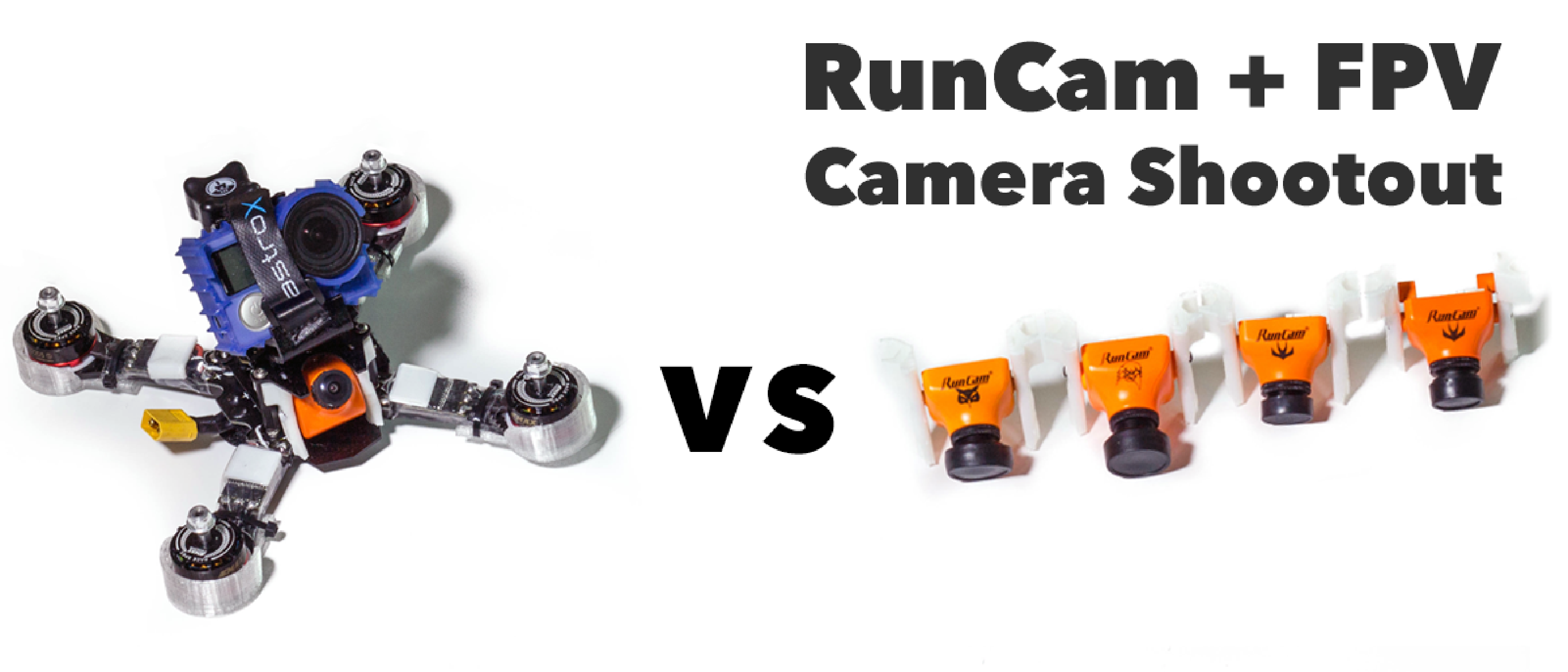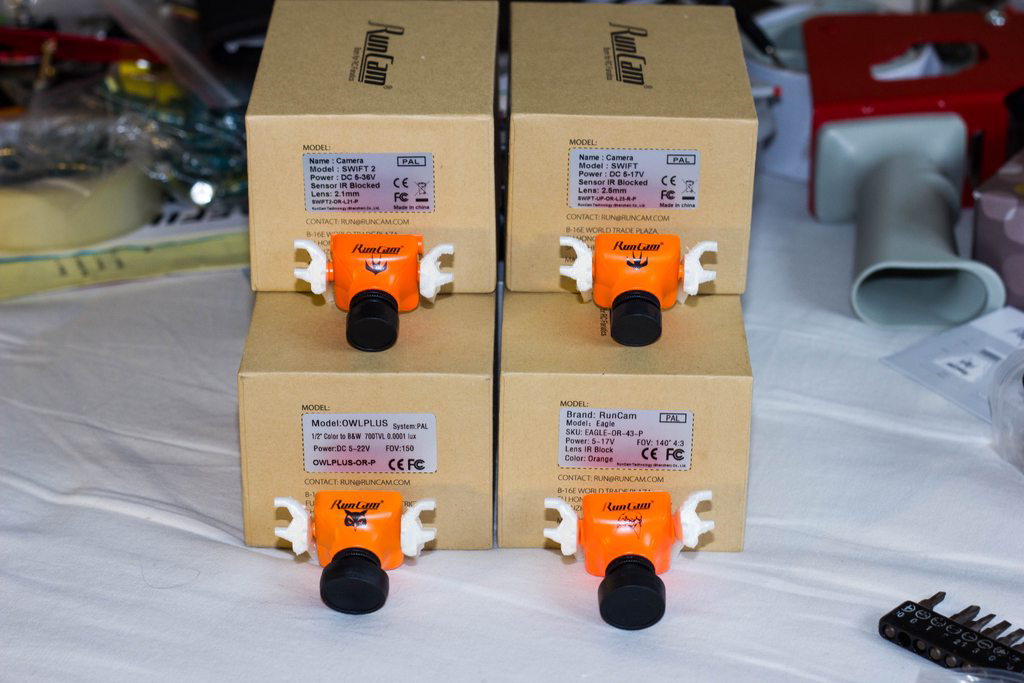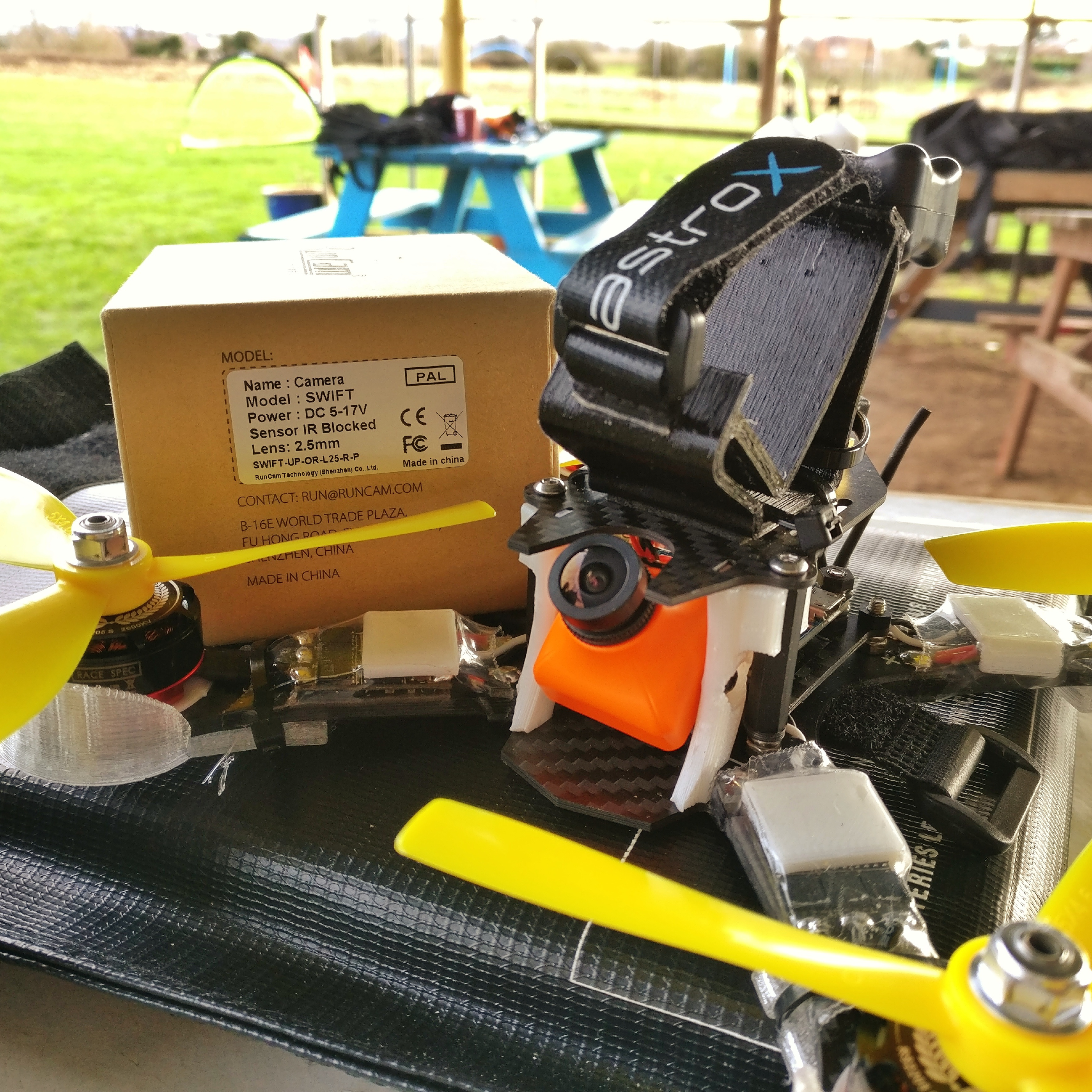Reviews
RunCam - FPV Camera Shootout!
Posted on January 18, 2017 • 9 min read • 1,754 words
Now, let me first start by saying this has been one of the reviews I’ve been wanting to do for AGES. I know there’s other reviews out there already, many in fact. But the problem I see is there is always stuff missing from them that doesn’t meet my own needs to determine if the camera is suitable for the application or not. I will try and cover that myself, hopefully.. :) The review itself has been a long time coming - I got most of these cameras with thanks to RunCam back at the start of November time, but like the other reviews personal commitments and Christmas has meant that it got rather delayed frustratingly. But hey, we’re here now, and this is it!! :D
Why review all of them?
Well that’s a good question, and the answer is simple. RunCam create FPV cameras to suit every need, and I want to explore every one of those needs to determine if you NEED a camera for every single environment, how they compare to each other, but also if you can tune an existing camera to do well at another niche there is maybe another camera for. I’m not trying to say that “buy this one camera and it will fit all your needs”, but many forget the sheer power of tuning options most cameras have, and how you can adapt them to fit most scenarios if need be. I’ll be doing the comparison against the ’trusty’ HS1177- it’s currently the camera I use in all of my quads, and that’s really just down to affordability, performance and reliability combined. I’ve never switched just because I know it works, and for me a good FPV feed is required, so I’m excited to see if the RunCam lineup is worth the switch (which I imagine it probably will be), but that’s another part of the review.. :)
The Cameras
RunCam Eagle
Product link: RunCam / Banggood Price as of 18/01/2017: £44.78
Designed For: All-round FPV use with high quality and colour quality, CMOS sensor may hinder if you are used to CCD but we shall see.
RunCam Owl Plus
Product link: RunCam / Banggood Price as of 18/01/2017: £36.64
Designed For: Great day flying but with epic night performance, a camera to suit all conditions.
RunCam Swift
Product link: RunCam / Banggood Price as of 18/01/2017: £30.12
Designed For: I would peg this as a direct HS1177 rival, with essentially the same features and spec.
RunCam Swift 2
Product link: RunCam / Banggood Price as of 18/01/2017: £32.56
Designed For: An evolution of the original Swift with useful additions such as OSD with voltage and Microphone.
The Test!
So with the base features (that I think make them stand out), let’s see how they fly. My initial plan for the review was to do 2 sections or stages of it. The first section covers the camera ‘as is’ with absolutely no settings adjusted (including OSD etc), and the second section would cover another option of a ’tuned’ camera - one that has all the settings optimized for great FPV flying. While I have completely covered the first section, the nice thing about the RunCam line of cameras is that actually the default settings are already some of the best out there - Wide Dynamic Range is turned on and up to full, Exposure and colour modes are set correctly as well, so there really isn’t anything else left to do. I have however on the cameras that it applies to gone through the OSD settings in another video to try and cover all of the options available to the cameras.

All testing was done on a TSX200, which made the testing super easy to perform (and is why I am now going to run it as a racing frame for this year). Unscrew the top 2 carbon plate bolts, then the top plate can be rotated sideways allowing the FPV camera to slide out the top and unplugged. Repeat the process in reverse order and the quad ready to go again in less than 2 minutes.

I prepared for the review as much as possible, printing some ready-to-run camera brackets so all I need to do is slot the camera into the frame and plug it in, and screw the 2 bolts back onto the frame and that’s it!
The Footage
So if you look closely there’s a few things I’ve noticed in the picture quality which I will go over with each camera, as it’s important to do so.
Swift
A great performing HS1177 alternative that offers the same features, with great colours. I found them to be marginally better than the HS1177 it replaced, with the colours being brighter and more vivid. No goggle adjustments were made.
Swift 2
This was easily one of my favourite cameras of them all. The picture quality seemed to ‘pop’ even more than the original Swift & HS1177, and while slightly lower than the Eagle it features a CCD sensor so we are guaranteed decent light performance when it’s actually sunny. The voltage OSD is a nice feature that saves having to run any sort of other OSD or current monitoring (to some degree), but I could not however find how to remove the RunCam text from the OSD, kind of annoying if you want to run a cam title there - and distracting for those who wish to run no title at all. As soon as I got back home I found the other OSD menu by holding the UP button, and I could adjust everything else from there (such as the RunCam text, voltage, timer etc) - it’s a little weird having 2 OSD’s but could be quite good if you have the need to run more than 2 camera titles.
All of the defaults, again, like the Swift were set to good value parameters with Wide Dynamic range and all of the usual goodness already turned on, so no adjustment and updated flights were needed.
Eagle
For me this is THE camera that shocked me the most. It’s hard to portray it in DVR as the bitrate is always lower than what we see, however the picture quality on this camera was just INSANE! Being typical British weather, we didn’t get much sun so I couldn’t really tell how good the light switching would be (as it is a CMOS after all), but the quality of the camera (aluminium shell) is fantastic, and the picture was just insane. Everything was so sharp, it felt like it was just a step below Connex ignoring resolution.
The main thing I noticed on this camera really was how powerful some of the OSD features on - not only is it a colour OSD (pretty cool lol), but you can adjust the sharpness of the edges which gives you that tearing that we sometimes see on certain cameras. On stock it was maybe a little too high (AUTO), but setting it manually we can fine tune that to our tastes. 1 minute and 15 seconds into the video you can see on the box on the left switching from 1 to 15 as the value (min and max) how much of a difference it makes even close range.
Owl Plus
For me, this was the most disappointing camera if I’m honest. I’d seen other reviews online that show the contrast of the camera is vastly different to others around, and this is really where it shocked me. It felt to me like the camera was almost distracting being such harsh lighting, and did not portray the environment accurately at all. It may help for racing if you are looking for this kind of image, but for me I was really not a fan.
I went through into the menus to try and adjust the contrast so that the light differences were not so harsh, but there was nothing to change.
Generic HS1177
Here’s the footage on one of my quads that currently uses one of the generic HS1177’s we see everywhere. I’m not sure of the brand of this one, but here’s the footage for a full comparison.
From my point of view I can already tell watching the other footage that this camera does not really perform as well as the others, namely the Swift 2. No adjustments at all were performed to the flight dvr, so we have the pure comparison and it just seems like the colours are not as great. In the review I left the camera tuned to how I normally fly it (with DWDR on and a camera title), everything else was left stock as you would imagine.
Conclusion
With my core focus with flying quads being racing, it’s always been an important factor for me to have complete consistency across my builds, especially the race builds. I run multiple identical quads for that reason, with good hardware that (mostly) has a good track record, especially when it comes to the FPV video gear. Now, saying that once I had got my first HS1177 it was all I ever bought as they never failed for me unless it was user error or an extremely hard crash. With the review contents above, would I switch out to one of the RunCam products? Absolutely. I am now contemplating switching all of my current cameras to the Swift 2 - my current builds lack current monitoring, so having onboard voltage with hassle free wiring that would work on any quad frame regardless of PDB is a big thing for me. The fact that the image quality is just better and all of the spares really just top it off.
As for whether it would impact on your next purchase decision? That is for you to decide.. :)
It is worth finally noting that I hoping to do some separate night tests using the Owl Plus and hopefully a Night Eagle, but securing a safe location to do the tests is proving to be harder than I thought it would. I also want to do some sunny sky day tests, but we are of course in the UK which presents a large problem in itself!
I hope the review has been helpful to everyone, and thanks to RunCam for providing the cameras to create this review in the first place!